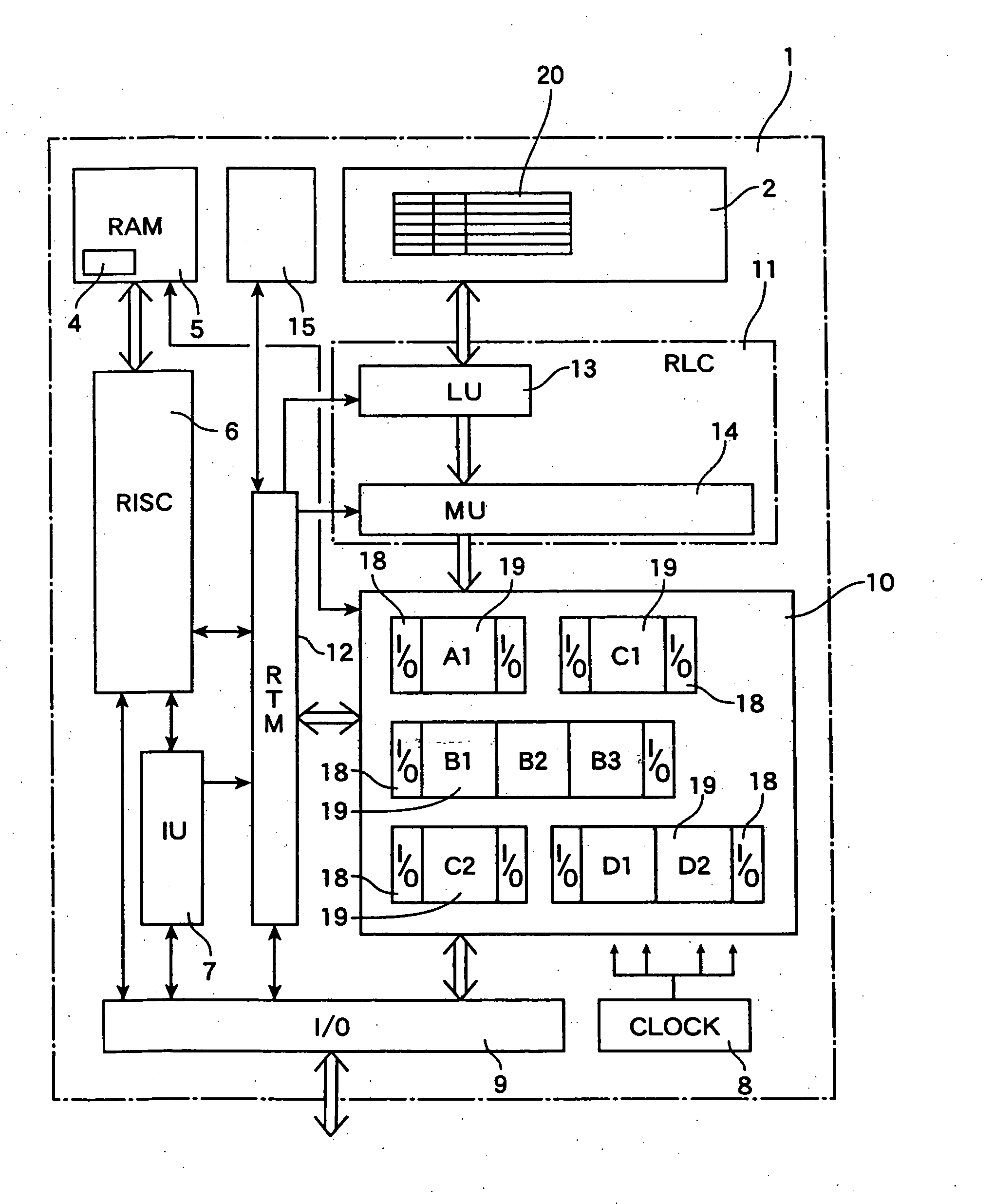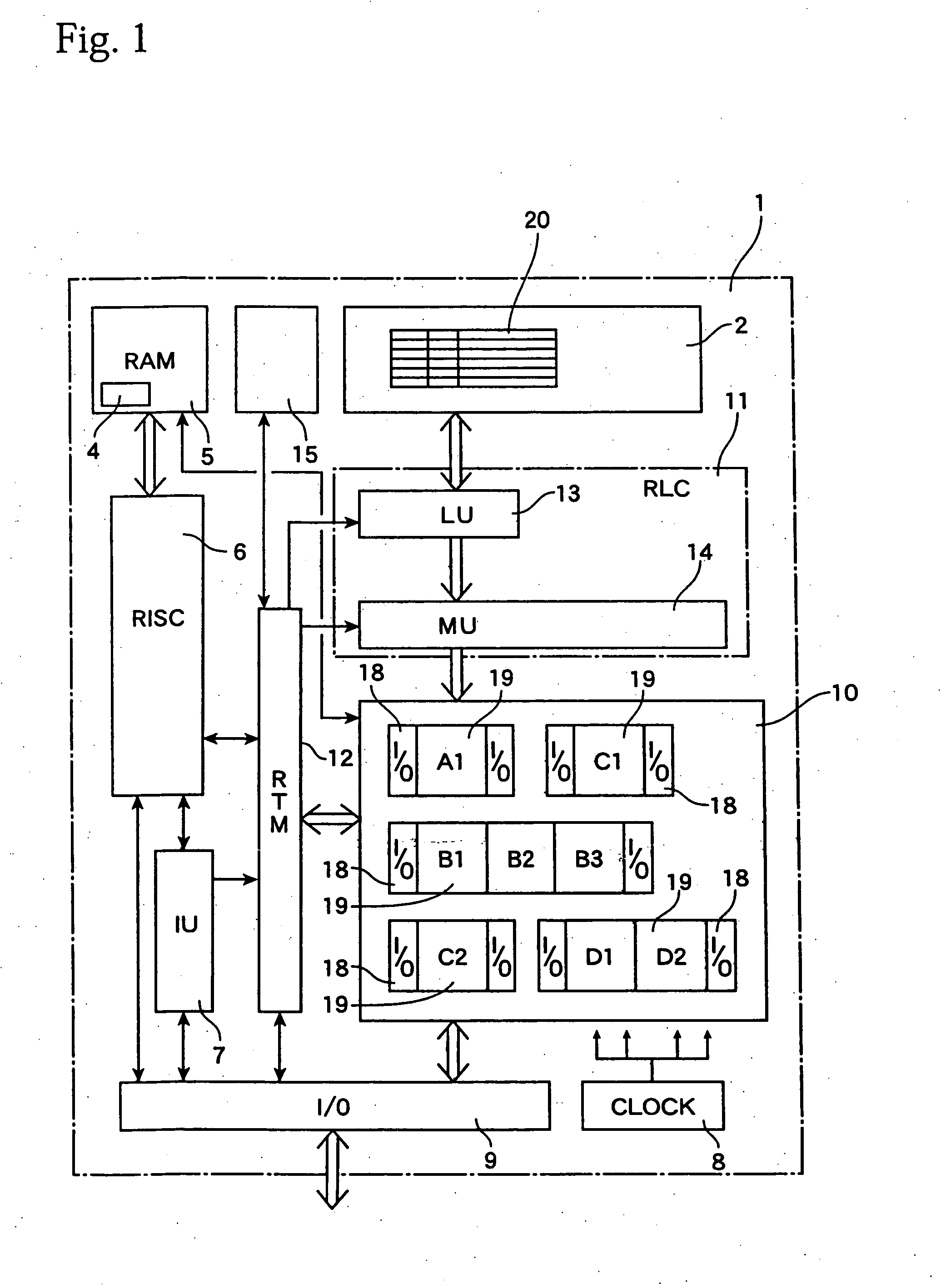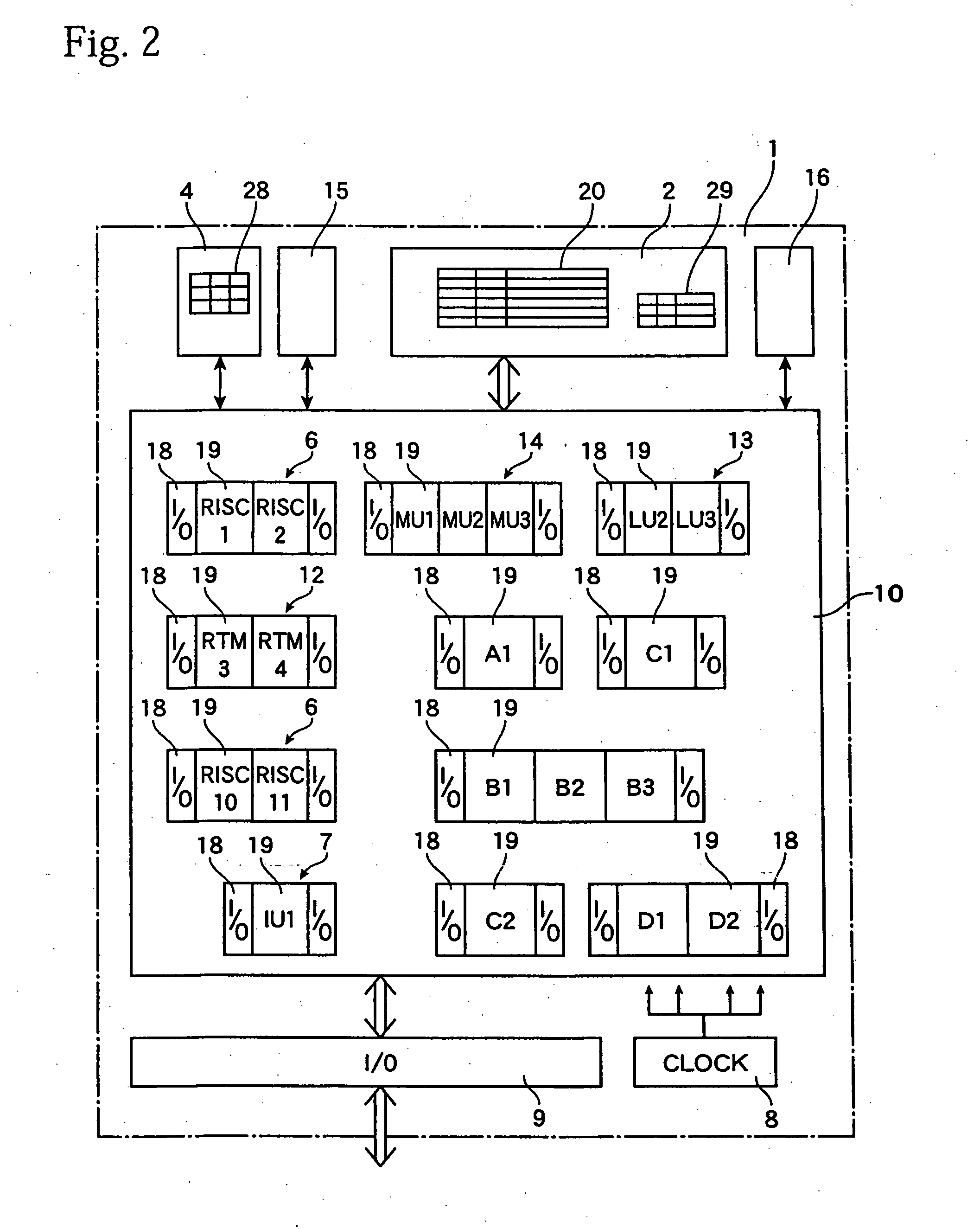Data Processing System
a data processing system and data processing technology, applied in the field of data processing systems, can solve the problems of inability to carry out real-time processing, inability to simulate a complex circuit, and a large amount of testing time, and achieve the effects of high performance, high functioning, and great freedom of trade-offs
- Summary
- Abstract
- Description
- Claims
- Application Information
AI Technical Summary
Benefits of technology
Problems solved by technology
Method used
Image
Examples
Embodiment Construction
[0059]FIG. 1 shows one of a data processing system included in the present invention. The data processing system (apparatus or device) 1 is an architecture LSI and includes a logic circuit region (“RC region” or “reconfigurable region”) 10 where circuits can be dynamically reconfigured, an architecture library 2 in which a number of architecture codes 20 of hardware modules are stored, a rapid loading control unit (RLC) 11 that can translate the architecture codes 20 on the reconfigurable hardware 10 and initialize and execute the divisional hardware, and a rapid logic communication master (RTM) 12 that can carry out control of a rapid logic circuit exchanging operation and transmission (transfer) of hierarchical information. The RLC 11 includes a function as a load unit (LU) 13 that obtains (i.e., fetches or downloads) the architecture codes 20 from the library 2. In addition, the RLC 11 includes a function as a mapping unit (MU) 14 that carries out mapping of object circuits 19 an...
PUM
 Login to View More
Login to View More Abstract
Description
Claims
Application Information
 Login to View More
Login to View More - R&D
- Intellectual Property
- Life Sciences
- Materials
- Tech Scout
- Unparalleled Data Quality
- Higher Quality Content
- 60% Fewer Hallucinations
Browse by: Latest US Patents, China's latest patents, Technical Efficacy Thesaurus, Application Domain, Technology Topic, Popular Technical Reports.
© 2025 PatSnap. All rights reserved.Legal|Privacy policy|Modern Slavery Act Transparency Statement|Sitemap|About US| Contact US: help@patsnap.com



